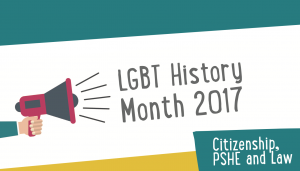
Last week I was talking to a researcher for the People’s History of LGBT+ Life in Britain. She asked me for my views on the changes I’d seen since I was a teenager. I said that there’d been momentous legal changes for lesbian, gay and bisexual (LGB) people’s equality and rights, mentioning that when I was at university in the very early Nineties most of my gay male friends who were under 21 were breaking the law by having sex. Unsurprisingly, she seemed quite shocked.
I also had to admit that, although I can now legally marry another woman, I don’t feel safe to hold her hand when walking in my local neighbourhood. The researcher said I wasn’t the first person to have said this to her. It’s a strange situation to be in, but one that demonstrates the additional social and psychological stress that many LGB people face in everyday life, which can have longer-term effects on mental health and wellbeing.
So how poor is the mental health of LGB people in the UK? It’s a topic that’s been covered by others such as Chakraborty and colleagues in 2011 and I explored research on the mental and physical health related quality of life of older LGB people in a Mental Elf blog a few years ago.
Although still a prevalence study, this research offers a slightly different take and is the first to pool sexual orientation data from 12 recent UK population health surveys. The researchers aimed to
evaluate whether the association between sexual orientation identity and mental health (common disorder and low wellbeing) was different in different subgroups of the non-heterosexual identified adult population in the United Kingdom, using newly available pooled data from 12 population health surveys.

In the last 30 years, we’ve seen momentous legal changes for lesbian, gay and bisexual people’s equality and rights.
Methods
The researchers used the following UK surveys, which were identified through a UK Data Service search as including terms that relate to sexual orientation:
- British Cohort Study, 2012
- Health Survey for England, 2011-2013
- Scottish Health Survey 2008-2013
- Longitudinal Study of Young People in England 2009/2010
- Understanding Society 2011/2012
Participants in these surveys were recruited through random sampling strategies.
The total analytic sample for the combined surveys was 94, 818 participants, with 97.2% identifying as heterosexual, 1.1% identified as lesbian or gay, 0.9% as bisexual and 0.8% as ‘other’.
The included surveys used the Office of National Statistics sexual orientation identity standardised wording: ‘Straight, Gay or Lesbian, Bisexual, Other’.
Threshold for meeting the symptoms of common mental disorder was defined as scoring four or more on the General Health Questionnaire-12 or as moderately/severely depressed on the EQ-5D subscale. Low wellbeing score was defined by falling below the lowest sex-specific quartile of scores on the Warwick-Edinburgh Mental Wellbeing Scale.
Covariates included sex (male or female); ethnic group (White vs. ethnic minority); educational attainment (none to university degree); smoking status (current vs. ever smoker); longstanding illness/disability (yes or no); married or cohabiting (yes or no).
The researchers used various forms of statistical analysis to measure the association between sexual orientation identity and mental health and wellbeing, across the covariates.
Findings
- Non-heterosexual (lesbian, gay, bisexual and ‘other’) adults were twice as likely to report symptoms of poor mental health, such as anxiety and depression than heterosexual adults. This was slightly less strong for females.
- Increased risk for poorer mental health and wellbeing was strongest for the younger (under 35) and the older groups (55+), and weaker in mid-life (35-49).
- Effects did not appear to differ for ethnic minority status or educational attainment, nor for relationship/marital status.
- Bisexual (vs. heterosexual) adults appeared to have the highest risk of meeting the threshold for symptoms of common mental disorder.

Non-heterosexual adults were twice as likely to report symptoms of poor mental health, when compared with heterosexual adults.
Conclusion
The study authors concluded that:
In the UK, LGB adults have higher prevalence of poor mental health and low wellbeing when compared to heterosexuals, particularly younger and older LGB adults. Sexual orientation identity should be measured routinely in all health studies and in administrative data in the UK in order to influence national and local policy development and service delivery. These results reiterate the need for local government, NHS providers and public health policy makers to consider how to address inequalities in mental health among these minority groups.
Strengths and limitations
This study makes a significant contribution to the quantitative and epidemiological research evidence base on LGB mental health, and has enhanced the knowledge by adding findings specifically about bisexual people, gender and age group. By pooling recent data from 12 sources, the study gives a more or less up to date picture of the state of LGB mental health and wellbeing in the UK.
The researchers themselves are clear about the limitations of the study, remarking on the difficulties of categorising something as complex and varied as sexual identity and behaviour for a survey.
They suggest that further work could be done on covariates such as disability, urban or rural setting and region. Also of note is the potential sensitivity of the question on sexual orientation and how the survey was administered. The researchers also felt that the EQ-5D was a limited measure of mental disorder, which conflates anxiety and depression.
Implications
This study uses a very recent and sizeable combined dataset to demonstrate, once again, that non-heterosexual adults are at risk of poorer mental health and wellbeing than their heterosexual counterparts. Surely the question now is ‘why’? The researchers refer to Meyer’s minority stress theory (Meyer, 2003) as an explanation
internal and external manifestations of prejudice, victimisation, and discrimination create observed health differences because these experiences are internalised. Chronic stress brought about by internalising stigma may therefore lead people who identify as non-heterosexual to experience poorer mental health and wellbeing.
So now comes the familiar cry ‘more research is needed!’ The LGBT Mental Health Research Group at the Institute of Psychiatry, Psychology and Neuroscience at King’s College London is currently trying to find out more about what promotes psychological wellbeing in LGBT students, which is a promising start.
Despite its limitations as a prevalence study, this research and its conclusions suggest that effective mental health care and support for LGB people should be informed by a biopsychosocial model, social and trauma-based understandings of mental health and distress. The research also emphasises the continued need for specialist services for LGB people, just at a time when they are being decimated through funding cuts (Taylor-King, Carr & Edwards-White, 2016).
LGBT History Month 2017 #LGBTHM17
Today is the first day of LGBT History Month 2017, the theme of which is Personal Health Social Economic education (PHSE), Citizenship and Law. This study recommends that local government, NHS and public health heed the evidence and address the quietly ongoing mental health crisis in LGB communities. However, the personal health and social education of children and young people, the active citizenship of LGB people and the application of law to protect and promote equality can help prevent the chronic social and psychological stress that appears to put LGB people at risk of poorer mental health and compromises their wellbeing.

Get involved in the LGBT History Month conversations on Twitter at #LGBTHM17.
Links
Primary paper
Semlyen J, King M, Varney J, Hagger-Johnson G. (2016) Sexual orientation and symptoms of common mental disorder or low wellbeing: combined meta-analysis of 12 UK population health surveys BMC Psychiatry 16:67 DOI: 10.1186/s12888-016-0767-z [Full text]
Other references
Chakraborty A et al (2011) Mental health of the non-heterosexual population of England. British Journal of Psychiatry, 198, pp. 143-48. [Full text]
Meyer I. (2003) Prejudice, Social Stress, and Mental Health in Lesbian, Gay, and Bisexual Populations: Conceptual Issues and Research Evidence Psychological Bulletin 129 (5) pp.674–697 [Full text]
Taylor-King S, Carr S, Edwards-White, T. (2016) Unkindest cuts: reflections on destruction and resilience in LGBTQ community-based mental health support Asylum 23 (3) [Full text]

It is an advance that we now have large datasets with representative samples that enable us to demonstrate the wide inequality in mental health between LGBTQ populations and heterosexual populations. Research is also emerging showing the elevated risk of poor mental health in LGBTQ young people compared to LGBTQ adults.
The question now is why? We know much less about the social, economic, cultural and psychological mechanisms that underpin these disparities in poor mental health. The Queer Futures study aimed to investigate why LGBTQ young people in England have a higher risk of suicide and self-harm, and how they asked for help. You can read the report freely here: http://www.queerfutures.co.uk/resources/
It is crucial we understand why LGBTQ people are more likely to have poor mental health because we can then develop interventions that prevent mental health problems and promote mental health and wellbeing.